AMD announces $999 RX 7900 XTX and $899 RX 7900 XT, available next month
RDNA 3 is bringing performance per watt and performance per dollar.
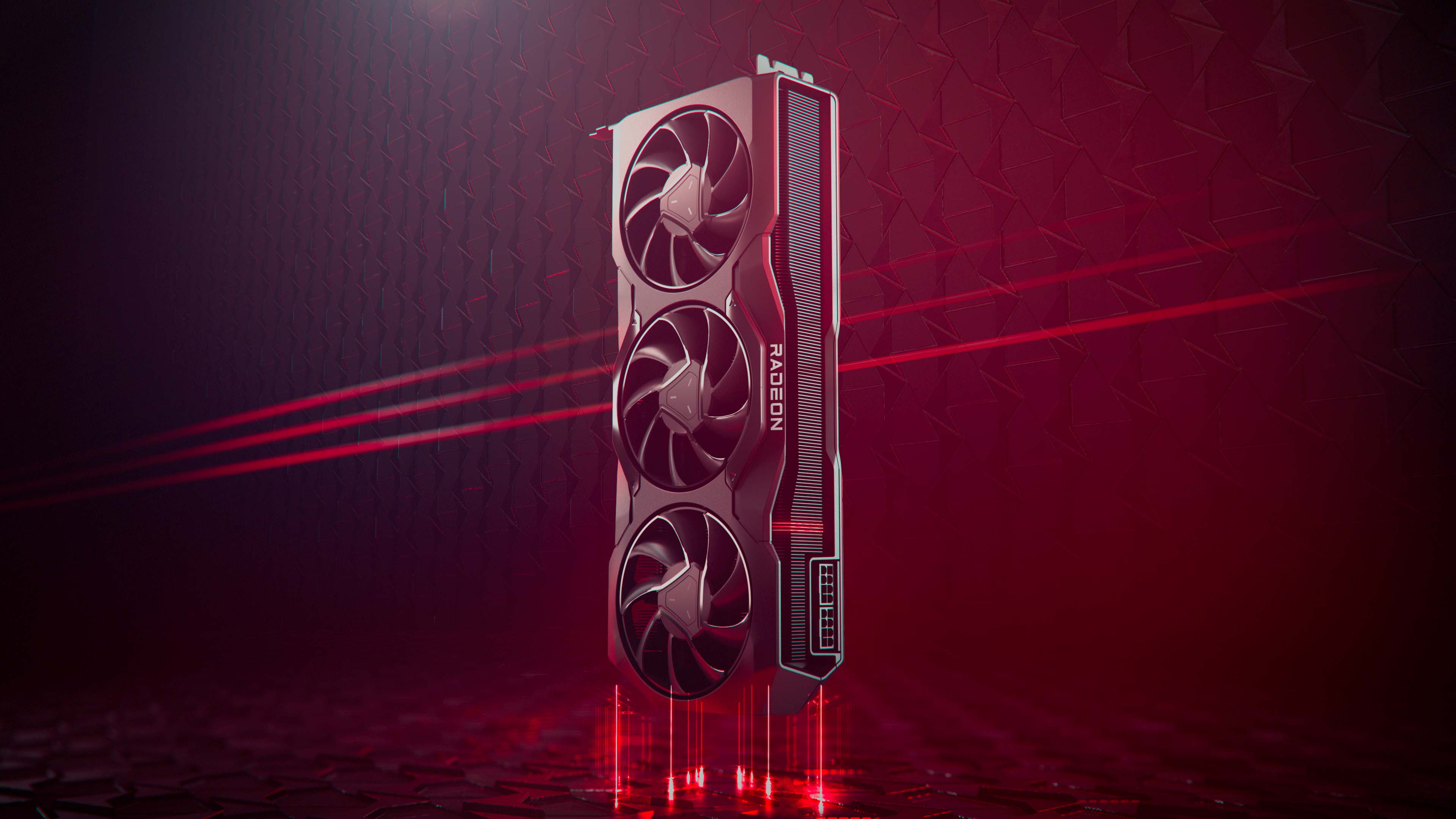
AMD has finally unveiled its next-generation GPU architecture, RDNA 3, and the first two cards to be built using the architecture: the Radeon RX 7900 XTX and the Radeon RX 7900 XT. Both cards will be available to purchase on December 13, 2022.
We've been waiting a long time for details on these two cards, so let's not dally around. AMD's bringing some impressive specs to bear with its two brand new enthusiast-grade cards, and the RX 7900 XTX is promising to deliver up to 61 TFLOPs of compute performance—nearly three times the 23 TFLOPs from the RX 6950 XT.
The RX 7900 XTX will employ the power of 96 RDNA 3 Compute Units (CUs), tantalisingly close to a triple-digit count. It will operate at a game clock of 2.3GHz, and comes with a generous helping of VRAM with 24GB of GDDR6 total. As the top card announced by AMD today, this comes with a 355W total board power (TBP). That's a bit more than the 335W TBP of the RX 6960 XT, yet the RX 7900 XTX is promising to be up to 67% faster than the card it replaces at the top of the stack.
The RX 7900 XTX will be priced at $999.
Then there's the RX 7900 XT. This comes with 12 fewer CUs than the XTX model, for a total of 84 CUs. It's up there in terms of clock speed, though, at 2GHz game clock, and comes with 20GB of GDDR6. It runs at a slightly more modest 300W TBP.
| Header Cell - Column 0 | RX 7900 XTX | RX 7900 XT |
|---|---|---|
| Compute Units | 96 | 84 |
| RDNA 3 cores | 6,144 | 5,376 |
| Game clock (GHz) | 2.3 | 2 |
| Memory | 24GB GDDR6 | 20GB GDDR6 |
| Memory bus | 384-bit | 320-bit |
| Infinity Cache | 96MB | 80MB |
| Total Board Power (watt) | 355 | 300 |
| Price (MSRP) | $999 | $899 |
The RX 7900 XT is only $100 less than the RX 7900 XTX, at $899, which might make the more powerful card the one to look out for if you can snap it up at $999. The RX 7900 XT might be the smarter buy if you're not fussed on the extra VRAM capacity, but our final verdict will come down to the performance delta between the two.
AMD offers a handful of graphs to whet gamer's appetites ahead of release.
Keep up to date with the most important stories and the best deals, as picked by the PC Gamer team.
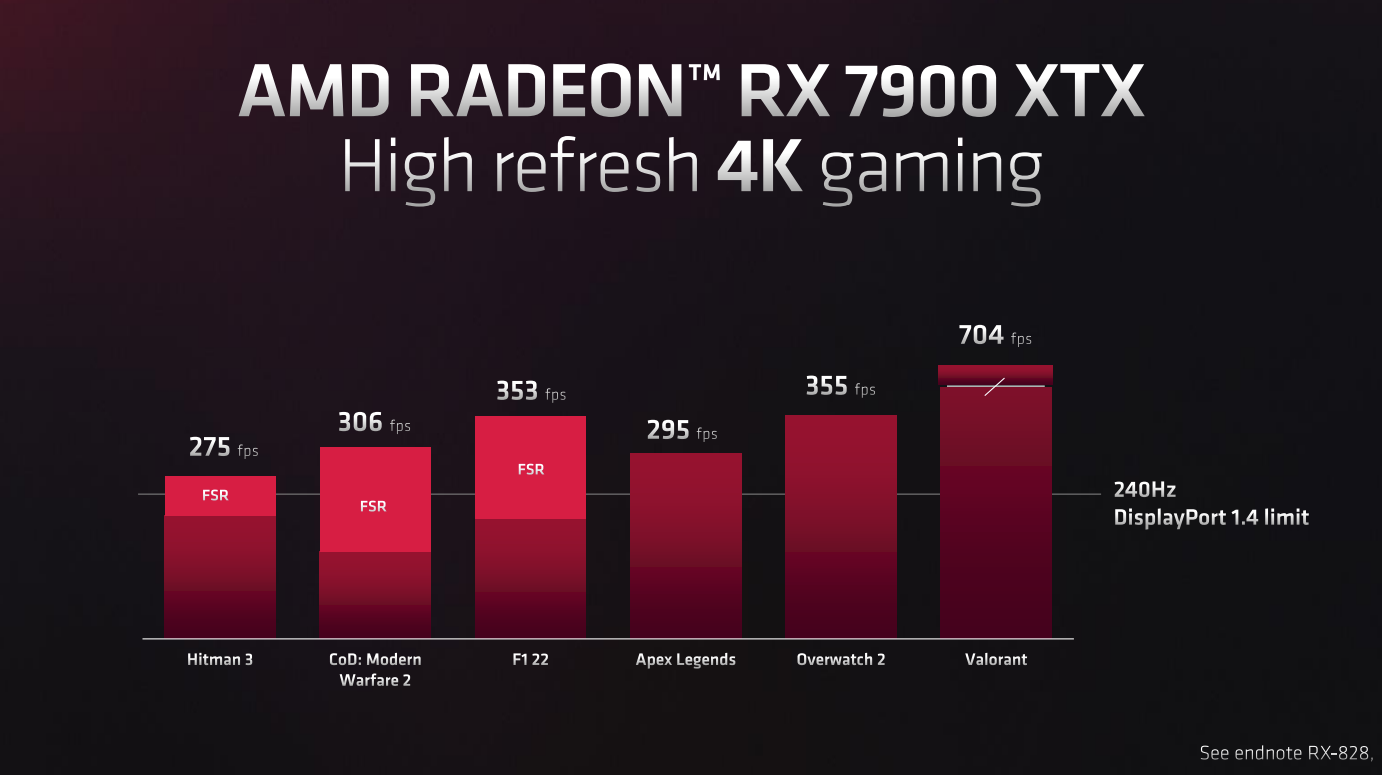
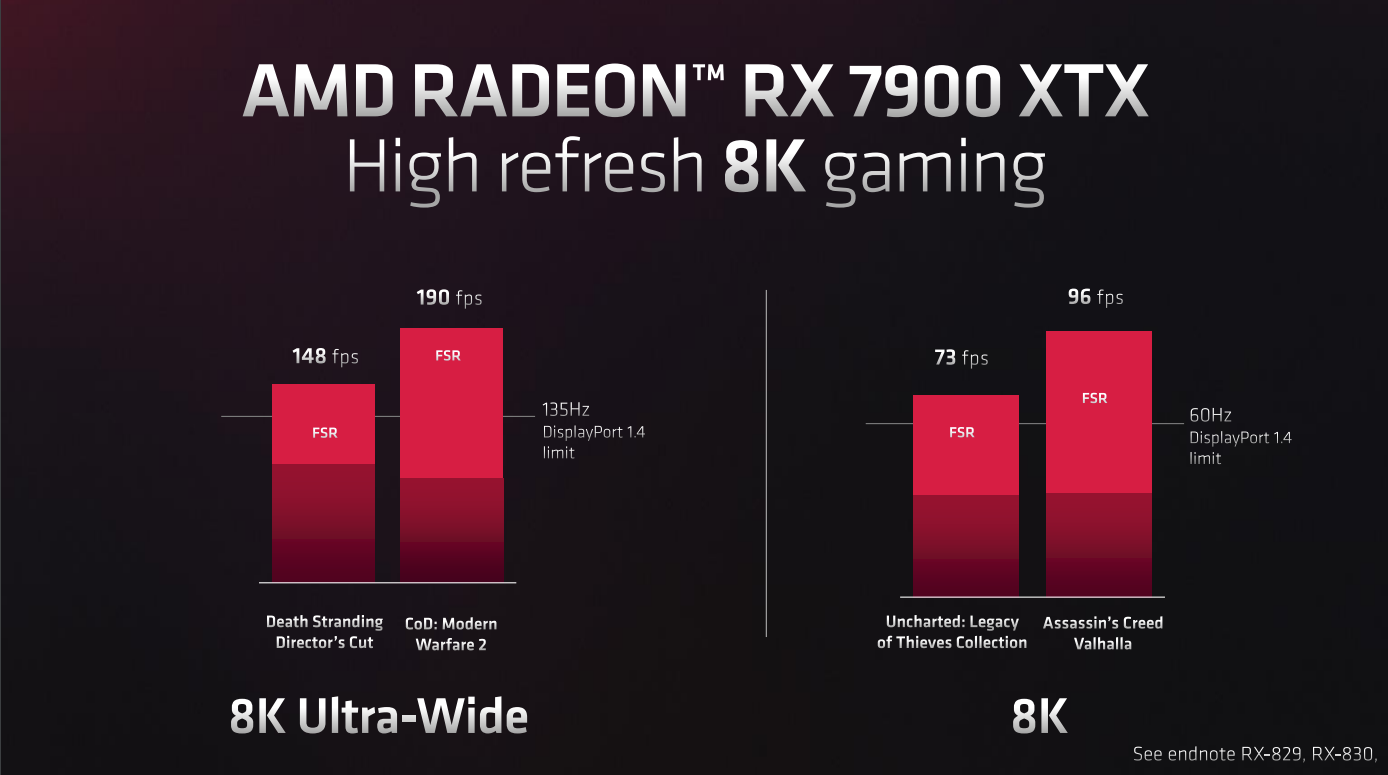
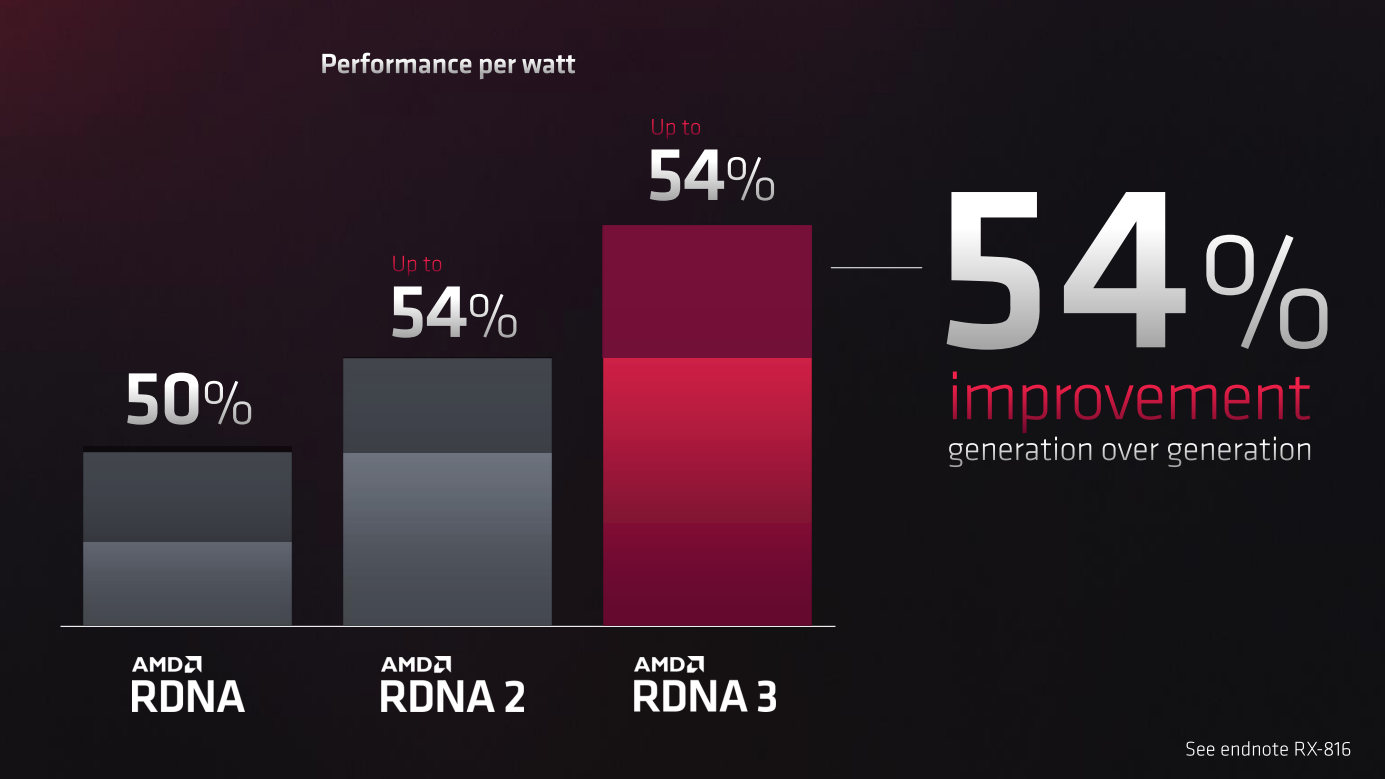

Both cards will stick with two 8-pin power connectors to deliver the wattage required to run them, though AMD hasn't precluded its partners adding another 8-pin for extra oomph with overclocked cards.
DisplayPort 2.1 will also be supported via AMD's new Radiance Display engine, which will allow for frame rates up to 480Hz at 4K and 165Hz at 8K. Whether you can actually make the most of that is another thing entirely, but it's good to see AMD include the display connector when Nvidia notably did not on the RTX 4090.
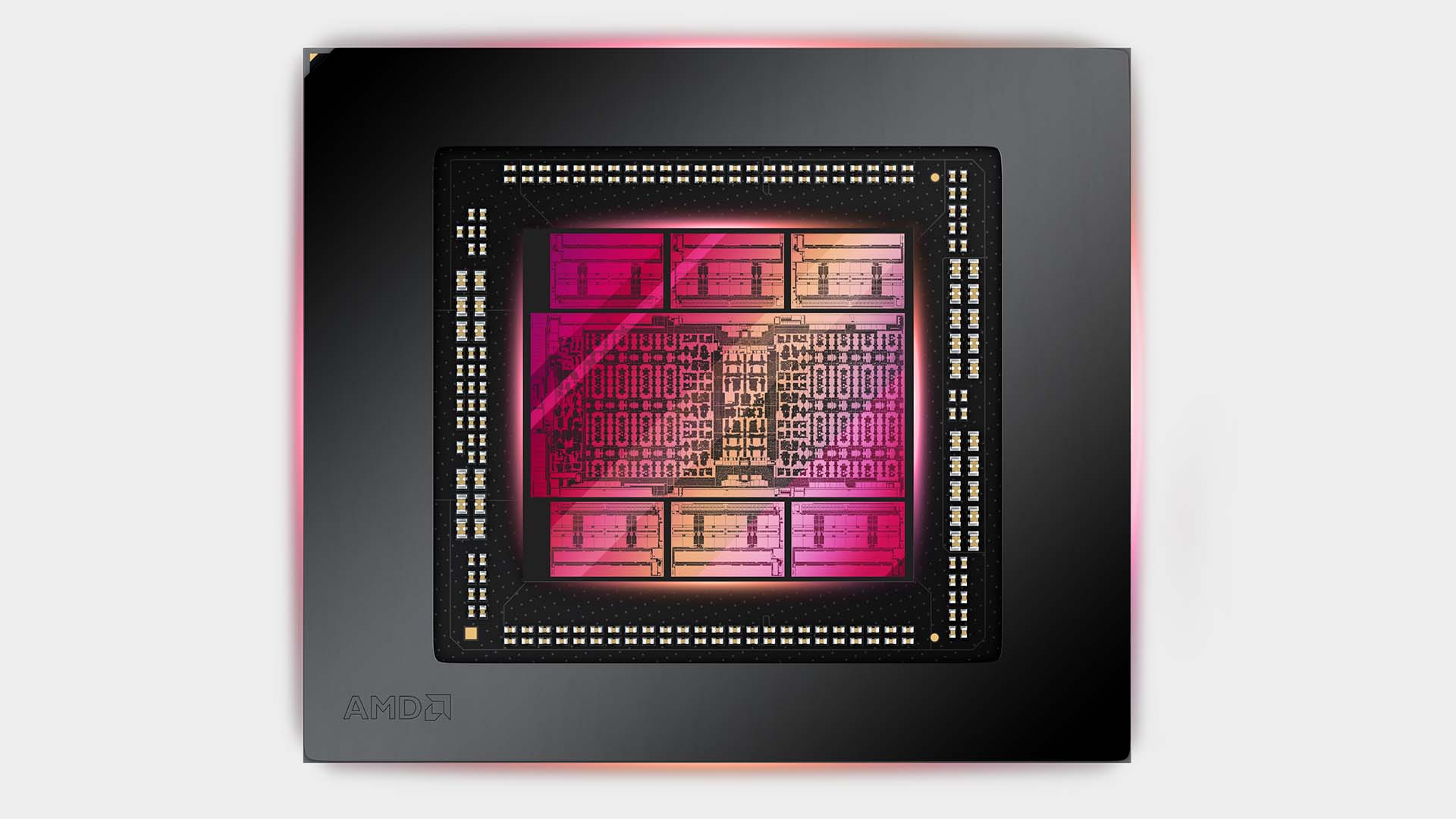
The GPU is where things get interesting. AMD is stuffing 58 billion transistors into its new GPUs, though they're not all in one place. These are chiplet-based gaming GPUs—the world's first, as AMD is keen to add.
Taking some of what it learned from its chiplet-based Ryzen CPUs, AMD has two new core components to its RDNA 3 GPU: GCD and MCD.
The actual rendering cores responsible for chomping through floating point and integer operations are located on what's called the GCD. Both RX 7900 XTX and RX 7900 XT come with a single GCD each, at 300mm2. The GCD is built on TSMC's 5nm process node, and includes not only the hardware required for AI, rendering, and ray tracing, but also the media and display engines.
The GCD also offers full support for AV1 encode and decode, AVC, and HEVC. AI acceleration has also been massively improved up to 2.7x over last-gen. If you're just looking for gaming performance, however, don't fret. The new GCD comes with improved ray tracing capabilities, delivering up to 50% more performance per CU. In a graph provided by AMD that does appear to make a big difference to the playability of games with ray tracing enabled on RDNA 3.
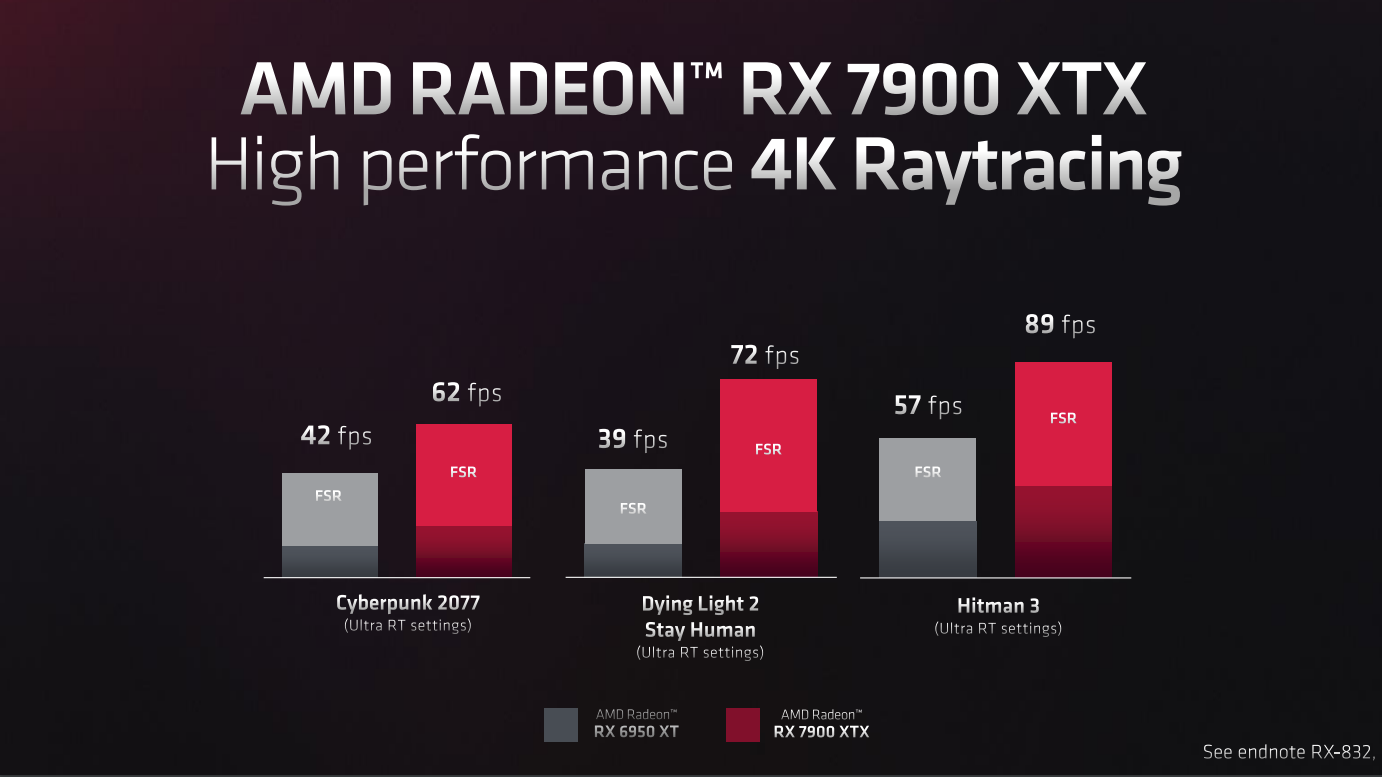
Surrounding this GCD, on both cards, will be six MCDs. These are much smaller chips than the GCD, each one sized at 37mm2. These are built on TSMC's 6nm process node. Each of these contains a 64-bit memory controller and second-generation Infinity Cache.
On the RX 7900 XTX, all six of these MCDs will be functional. Whereas on the RX 7900 XT only five of them will actually work. The sixth chip will still be there, but AMD says that's for manufacturing reasons, which I would assume means is due to the packaging process and potentially also for optimal cooling.
That should mean we can expect a full 96MB of Infinity Cache on the 7900 XTX, whereas the 7900 XT should come with 80MB. AMD didn't specify this spec for either card during its event, so I'm having to infer that from other comments on the MCD design.
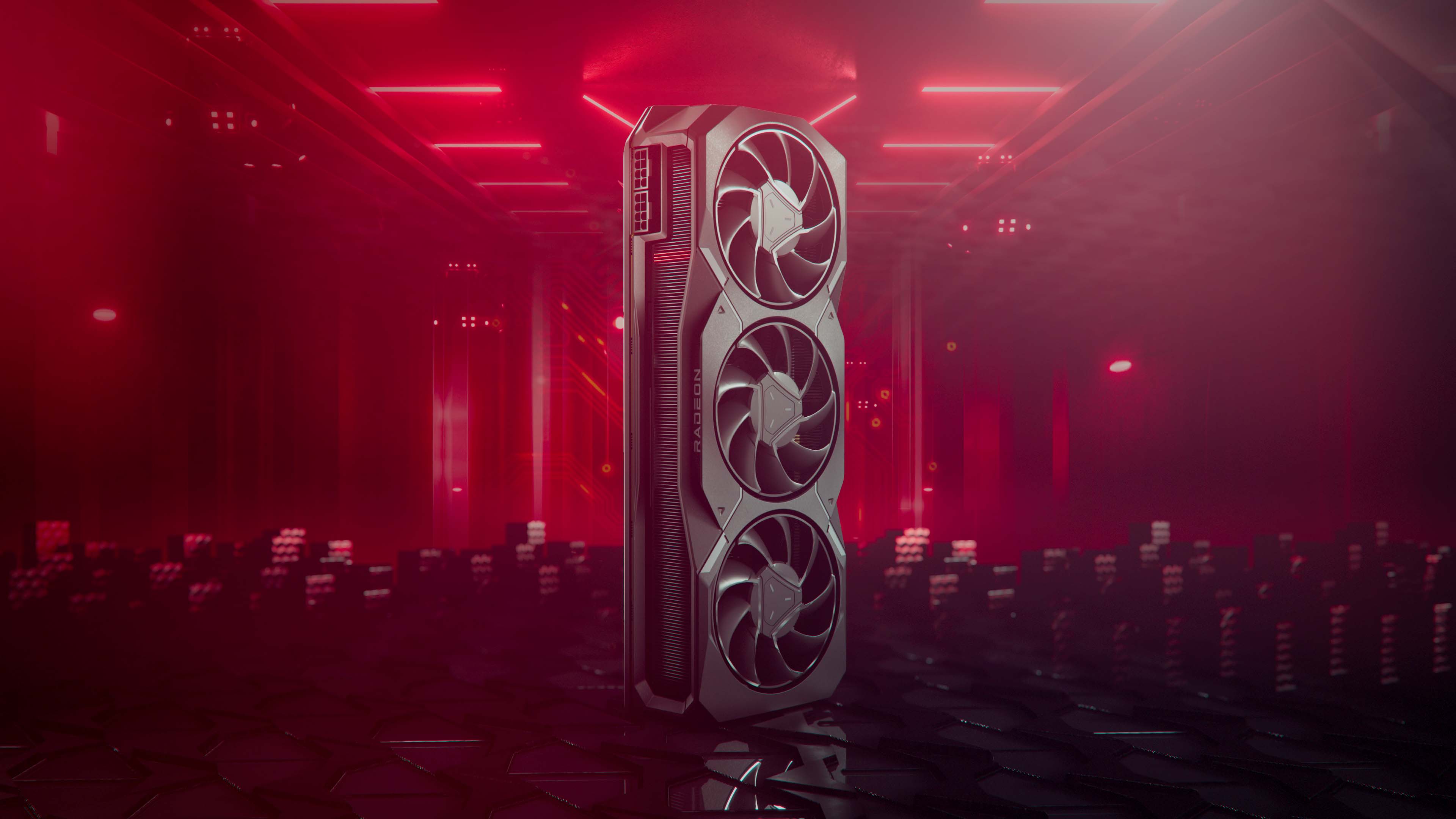
RDNA 3 uses split clocks across the shader and front-end. According to the company's engineers, gaming performance was limited by front-end more than the actual shaders themselves. Splitting the shader clock and the front-end clock in RDNA 3 allows for a faster front-end, up to 2.5GHz, and a slower shader clock, at 2.3GHz. That's essentially a 15% frequency boost while maintaining a 25% power saving, AMD says.
I'm not sure how that split clock will impact overclocking when we get our hands on these cards for ourselves, but AMD does suspect there will be some headroom for overclocking, both from its card partners and for gamers at home.
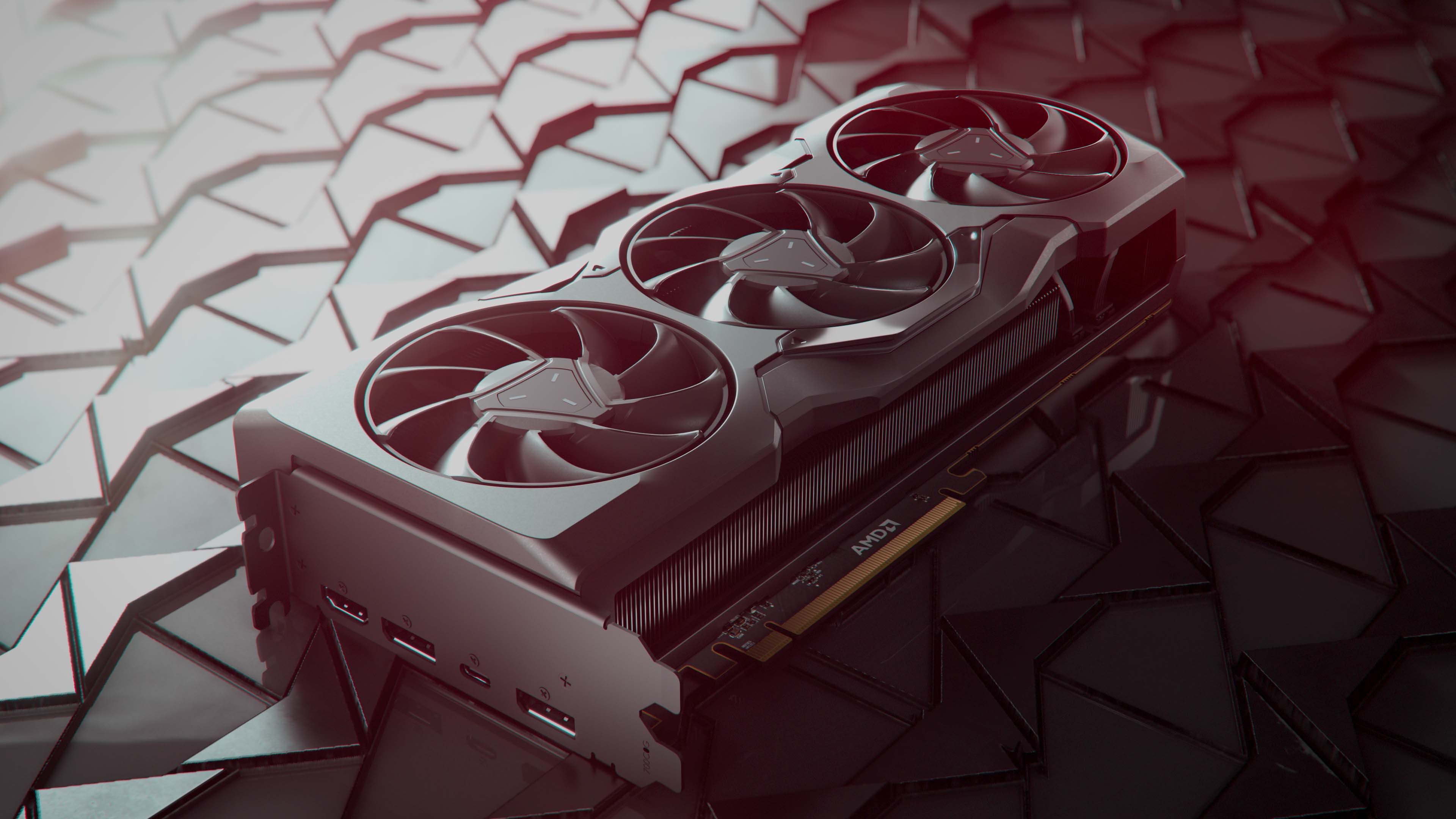

Best CPU for gaming: The top chips from Intel and AMD
Best gaming motherboard: The right boards
Best graphics card: Your perfect pixel-pusher awaits
Best SSD for gaming: Get into the game ahead of the rest
Of course, the big question on everyone's lips ahead of this announcement was whether AMD's RDNA 3 architecture has what it takes to topple Nvidia's recently released RTX 4090. In its live stream, we didn't hear much about that comparison. If you're thinking that's because the RX 7900 XT can't quite match the RTX 4090 in gaming, you might be right.
In a post-stream Q&A, AMD hinted that they aren't necessarily looking to compete with the RTX 4090. 'We're competing in $1,000 or below," says AMD's Radeon GM Scott Herkelman. Adding that he believes in the "performance and what we're offering in terms of price."
There's not too long to wait to find out how these cards square up in games. Both the RX 7900 XTX and RX 7900 XT will be available to purchase on December 13, with AMD's partners also gearing up to launch their own designs of both cards that same day.

Jacob earned his first byline writing for his own tech blog. From there, he graduated to professionally breaking things as hardware writer at PCGamesN, and would go on to run the team as hardware editor. He joined PC Gamer's top staff as senior hardware editor before becoming managing editor of the hardware team, and you'll now find him reporting on the latest developments in the technology and gaming industries and testing the newest PC components.

